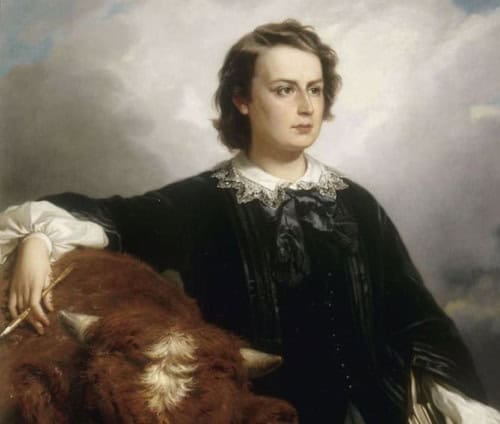
Today marks the 200th anniversary birthday of the French artist Rosa Bonheur, who is recognizable in the art scene for her Realist paintings of animals.
From a young age, Bonheur was encouraged to follow her artistic passions and spent her youth painting, studying her animal subjects in fields and abattoirs. Both Bonheur’s parents belonged to a niche Christian-Socialist sect named Saint-Simonianism, which advocated for the equality of women and workers and Bonheur’s father, an impoverished artist who worked with Landscapes, insisted that she pursue her dreams and career as an artist to establish her own independence.
Being a lover of animals, she took to her subject matter with great speed and was sketching cows and other farm animals long before she could even read. This love of animals, nurtured by her father, happened to coincidentally become the style of the times. “With the rise of the bourgeoisie and the fall of the cultivated aristocracy, smaller paintings, generally of every-day subjects, rather than grandiose mythological or religious scenes, were much in demand,” wrote Nochlin, author of Why Have There Been No Great Women Artists?
Since there was already an initial interest of the subject matter on her end, by the time other artists looking for job security in the market, Bonheur was already a master of the style and technique and was soon renown for her painting skills, reaching a realistic level of fame by her early 30’s for her painting The Horse Fair, 1852-1855. After this work caught the attention of the art world and drew her acclaim, Bonheur would later meet with royalty like Queen Victoria, and would eventually become the first woman to be award Frances highest order, the Legion of Honor. All this meant that Bonheur achieved her lifelong dream of supporting herself and the women she loved financially. Bonheur lived with her partner Nathalie Micas for more than 40 years, up until the day Micas died. After the death of Micas, Bonheur eventually began a relationship with American painter Anna Elizabeth Klumpke.
